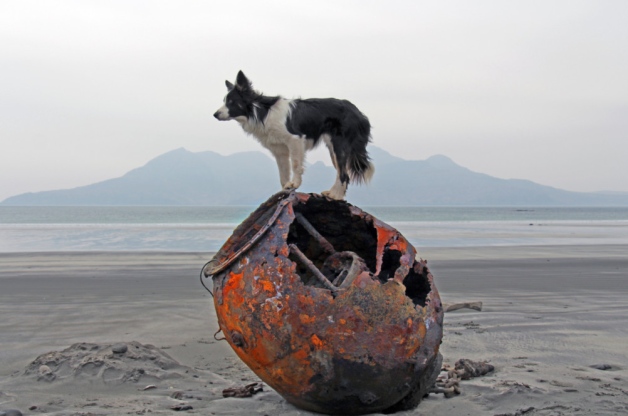A humongous WWII mine was recently discovered on the island of Eigg, although possibly the most interesting fact about it is that it was hiding in plain sight. Having been used as a tool in bonfires and children’s play, the explosive luckily never went off until a team of specialists was called in following the discovery. These specialists conducted a controlled detonation of the WWII mine, right after evacuating those nearby to ensure safety.
The discovery was largely due to an ocean tempest, which changed the face of the beach to reveal more of the device than had previously been visible. When only a tiny fraction could be seen, it much resembled the buoys present on other parts of the beach. Once revealed in its entirety, the few who had suspected that it was an actual WWII mine were proven to be correct. Usually such old devices are not so much of a threat, but this one still had its explosive casing.
When the sands were shifted during the rains to reveal the explosive in its full glory, a local immediately photographed it and sent the picture off the Eigg’s local police force. Recognizing the situation for what it was, they turned to the Navy. Even the specialists arriving from the Navy had not seen in at least three decades a WWII mine that was still capable of live explosion. Eigg’s police have issued a statement recommending that anyone who discovers a similar find should quickly notify authorities.
Such weaponry was used during the Second World War to protect Allied waters (especially those used for trade) from infiltration by German submarines. It is estimated to have been beached for at least sixty years, and in that time the WWII mine has extraordinarily not gone off. Locals at Eigg are thankful for this, as many of their children have used it as a playing ground when they thought it was simply a large buoy. Particularly lucky are those who have used its surface to build beach bonfires, The Scotsman reports.
The WWII mine at Eigg is a testament to the human footprint left by the war. Scraps such as this still pollute beaches and oceans to this day. Certainly, parents at Eigg are likely to be somewhat more cautious before letting their children play on similar devices in the future. The last thing anyone wants after skirting a potential disaster is to allow the narrowly escaped tragedy commence if another WWII mine should be found and not dealt with as quickly as this one was. The man who found it, John Cormack, easily might have saved the lives of innocent children simply because he contacted the proper authorities without hesitation.
